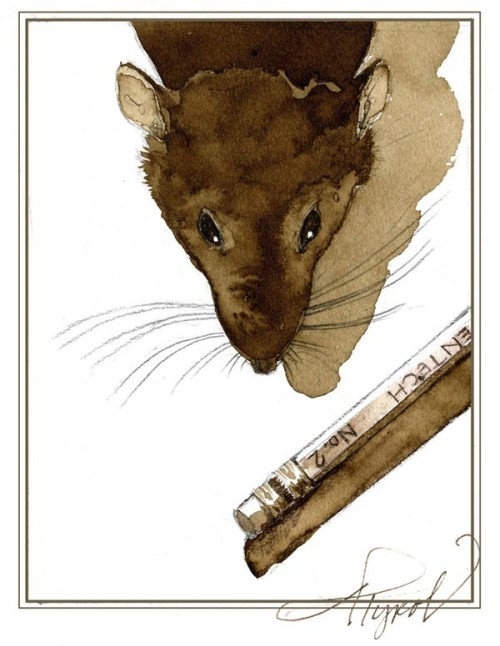
Of the many questions one is left with after listening to the nursery rhyme Three Blind Mice, none is more vexing than how three blind rodents were able to chase anything, let alone a farmer’s wife. As the three mice in question died in 1805, we’ll probably never know the full answer. There are some clues in the scientific record, though. The fact is, mice and other nocturnal rodents can take in sophisticated three dimensional information about their surroundings without using their eyes.
Rodent eyes don’t function like our eyes. Ours are on the front of our head and we see in stereo, their eyes are on the side of their head and their field of vision doesn’t overlap. Our eyes always move together, a rodent’s eyes can move in opposite directions. If a rat points its snout downward, its eyes look up, rather than where its nose is pointing. If its head tilts down to the right, the right eye looks up while the left eye looks down.
There is a purpose to these odd movements - to keep the space above in view at all times. To a rodent, constant scanning overhead for birds of prey is more important for survival than clearly seeing the path ahead.
So how do rats sense what’s in front of their noses? Instead of relying on sight, they pass their whiskers over all surfaces repeatedly from different angles to get three-dimensional images of their surroundings. This process, called “whisking,” occurs constantly and rapidly- up to 12 times per second, among the fastest movements measured in mammals. Each whisker has its own muscle and can move independently. There are also muscle arrays that move all the whiskers together.
If you were to examine a rat’s face, you would see that it has two different varieties of facial hair: long stiff whiskers that stick out around the snout and above the eyes, and shorter, finer whiskers below the nostrils that point down. The whiskers are arranged in a defined grid pattern. If you could peer into the rat’s head, you would discover that each whisker is connected to a discrete bundle of brain cells. These bundles are arranged in exactly the same grid pattern as the whiskers to which they are connected. This organization of sensors provides the rat with a detailed “snapshot” of the space in front of it.
Whiskers themselves are not living tissue. Their exquisite sensitivity lies at the base, in the follicle where the whisker sprouts from the skin. When a whisker touches a surface, it bends. The tension from bending is sensed by nerves in the follicle that send a signal to the brain.
While the bending of whiskers transmits spatial information, the sensitivity of whiskers to vibration allows the rat to feel differences in texture with astonishing accuracy. Whiskers are far more sensitive than the human fingertip – for instance, a rat can tell the difference between a totally smooth surface and one scored with microscopic grooves 30 microns deep (a micron being one thousandth of a millimeter).
Different whiskers resonate with different frequencies of sound. The thicker, longer whiskers away from the nose vibrate at lower frequencies, while the shorter, finer whiskers closer to the nose respond to higher frequencies. Like strings on a piano, the whiskers form an orderly array of filaments tuned to a gradation of sounds, or vibrations, from low to high. It is also likely that whiskers sense air currents in burrows and narrow spaces for additional directional clues.
Whiskers of course, do not operate in isolation. The rat senses its environment though hearing and smell too. In fact whisking and smelling, or sniffing, are locked into the same rhythm, so that every time a rat whisks it also sniffs. Thus a shape, texture and smell ‘snapshot’ is transmitted simultaneously to the brain.
All of which is to say that three blind mice, rats, or other whisking creatures wouldn’t be nearly as helpless as one might expect. While out in the open they might be easy prey for a hawk, or the farmer’s wife, in other contexts they could navigate well without sight. For a life often lived in shadows, scurrying beneath vegetation and navigating burrows, the touchy-feely sense of whisking offers a rich way to “see” that isn’t dependent on eyes.

